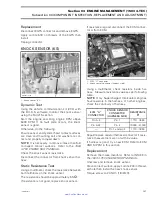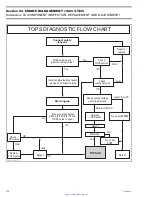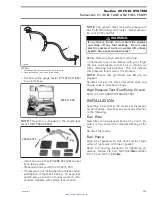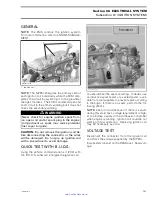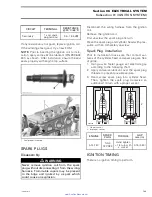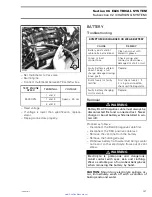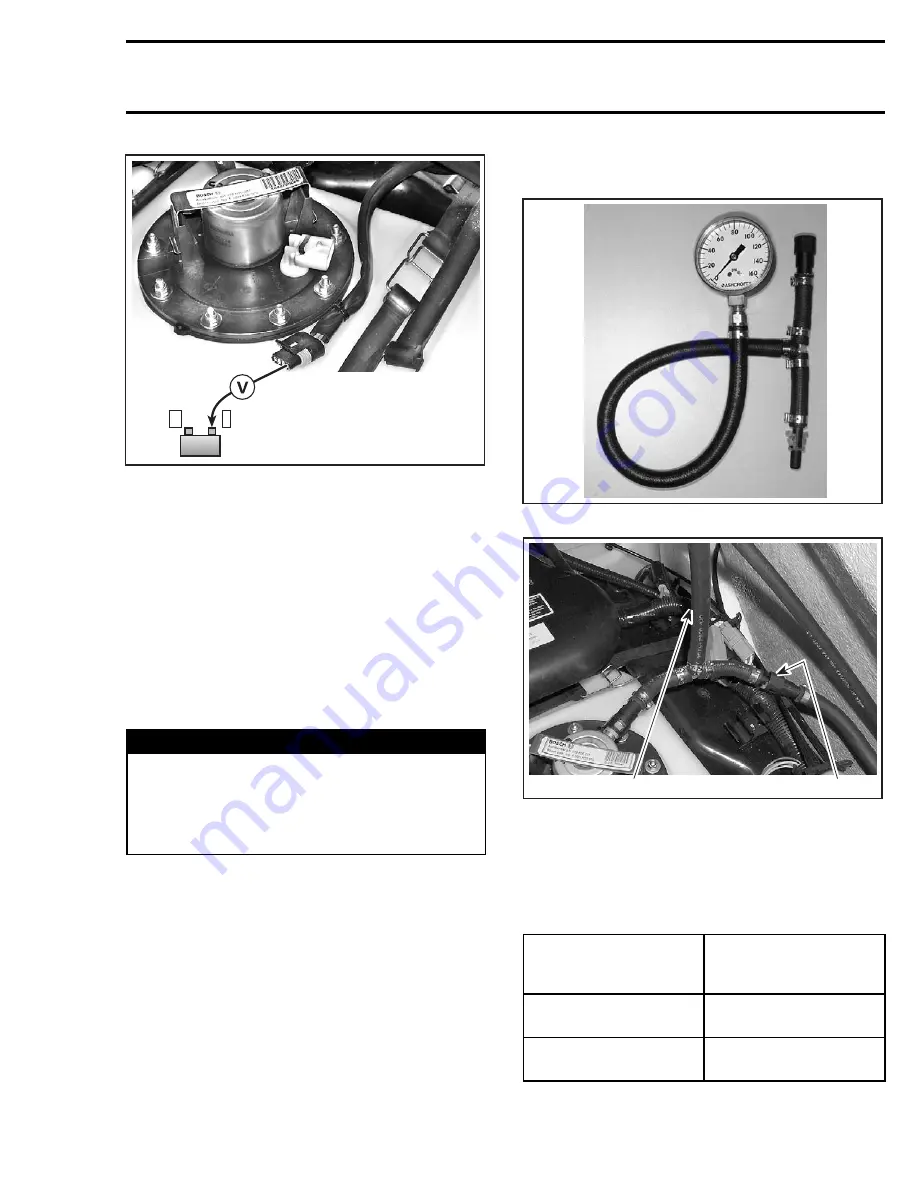
Section 05 FUEL SYSTEM
Subsection 01 (FUEL TANK AND FUEL PUMP)
-
+
F18F0VA
BAT
A
a. If battery voltage is read, check continuity of
circuit B-29 going towards ECM. If it is good,
try a new ECM.
b. If battery voltage is not read, check continuity
of circuit 1-26 going towards MPEM. If it is
good, try a new MPEM.
Fuel Pump Pressure Test
Before proceeding to the pressure test ensure the
battery is fully charged. Battery voltage must be
over 12 volts.
Release the fuel pressure in the system using
B.U.D.S. Look in the
Activation
tab.
WARNING
The fuel hose may be under pressure. Cov-
er the fuel line connection with an absorbent
shop rag. Slowly disconnect the fuel hose
to release the pressure. Wipe off any fuel
spillage inside bilge.
The pressure test will show the available pressure
at the fuel pump outlet. It validates the pressure
regulator, the fuel pump and leaks in the system.
Remove glove box to have access to fuel pump.
Refer to HULL/BODY section.
Remove air vent tube from front storage area.
Ensure there is no leak from hoses and fittings.
Repair any leak.
Ensure there is enough gas in fuel tank.
Disconnect outlet hose from fuel pump.
Install fuel pressure gauge (P/N 529 035 591) be-
tween disconnected hose (inline installation).
F02B0BA
FUEL PRESSURE GAUGE
1
F18R08A
2
1. Hose disconnected from fuel pump
2. In-line installation of fuel pressure gauge
Install safety lanyard and observe fuel pressure.
Do not crank engine.
Repeat twice. Release
pressure using B.U.D.S. between tests so that the
gauge is “reset” to zero (0).
MODELS
FUEL PRESSURE
(when installing safety
lanyard)
4-TEC naturally
aspirated/supercharged
290-310 kPa (42-45 PSI)
4-TEC supercharged
intercooled
386-414 kPa (56-60 PSI)
smr2005-014
141
www.SeaDooManuals.net

